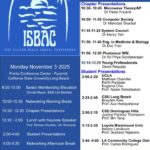Excerpted from IEEE-USA Insight:
THE SECURE ACT AND YOUR RETIREMENT SECURITY
by IEEE-USA Staff Feb 2020
The shift away from company defined-benefit pensions to portable tax-deferred retirement savings plans fundamentally shifted responsibility from employers to employees to ensure their financial security in retirement. That systemic change, coupled with longer expected life spans, has created a fundamental challenge for most Americans, who have not saved enough to maintain their current lifestyle in retirement – and with many at risk of outliving their assets.
Recognizing these trends, Congress passed the SECURE Act in December 2019, major legislation designed to promote retirement security and to reduce the risk that aging Americans would outlive their retirement assets. The bill, signed into law as part of an omnibus appropriations bill by President Trump on 20 Dec., includes 29 provisions, most of which took effect on 1 January 2020.
U.S. IEEE members of all ages should become aware of, and adjust their retirement strategies to reflect the new options and changes made by the SECURE Act. Key provisions of the SECURE Act would:
- Require 401(k) plan sponsors to explain what annual income you can expect at retirement from your current portfolio balance
- Allow retirement benefits for long-term, part-time employees
- Eliminate the restriction on contributions to a traditional IRA by an individual who has attained age 70½ [after 2019]. This provision puts traditional IRAs on par with Roth IRAs, which do not have an age limitation
- Raise the required minimum mandatory distribution age from 70½ to 72
- Relax rules prohibiting employers from offering annuities through sponsored 401(k) retirement plans
- Allow stipend and non-tuition fellowship payments received by graduate and postdoctoral students to be treated as eligible compensation to make an IRA contribution
- Raise the cap for auto enrollment contributions in employer-sponsored retirement plans from 10% of pay to 15%
- Allow “lifetime income investments” to be distributed from your workplace retirement plan, making them portable and allowing you to roll them over into another 401(k) or IRA
The Act also gives Americans greater flexibility in using their retirement funds prior to retirement. Key provisions would:
- Allow penalty-free withdrawals up to $5,000 from retirement plans for the birth or adoption of a child
- Allow penalty-free withdrawals of up to $10,000 from 529 education-savings plans for the repayment of certain student loans
- Allow penalty free withdrawals for qualified disaster recovery distributions from retirement plans of up to $100,000.
See the complete article for additional details.









